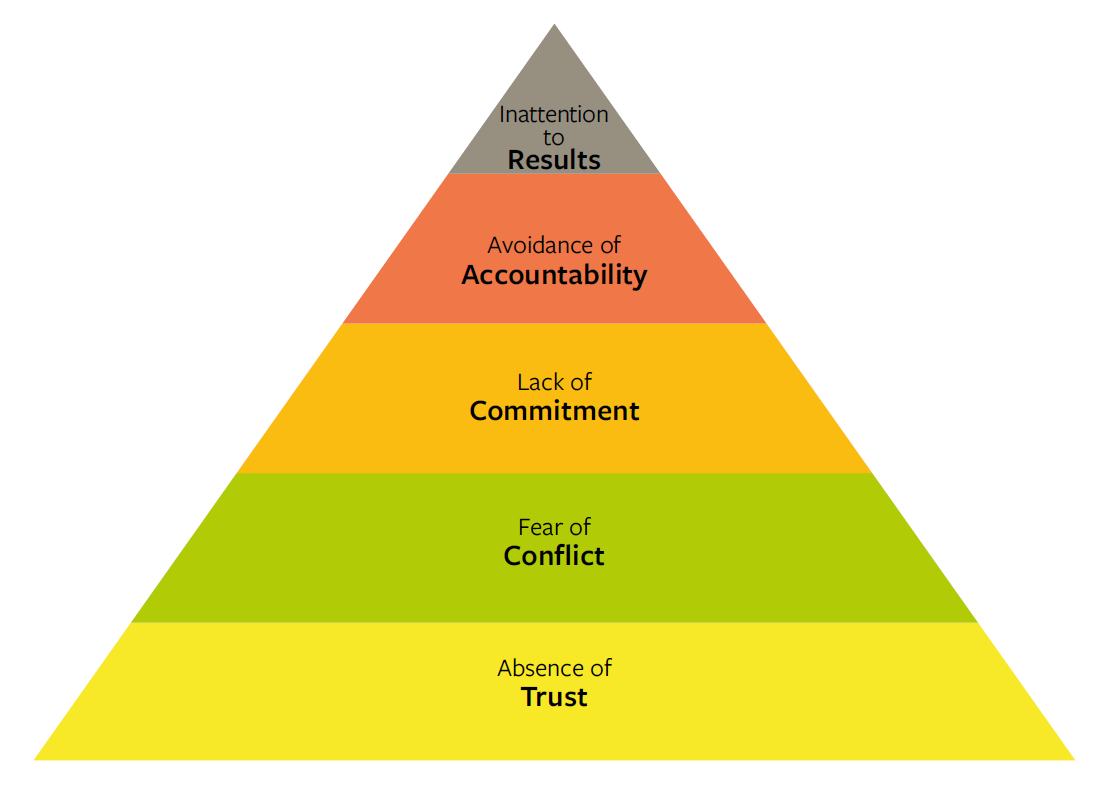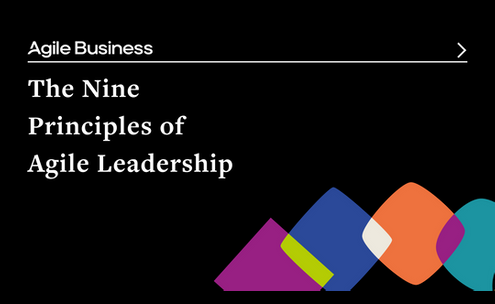Principle 8: Collaborative Communities achieve more than individuals
Collaboration; trust; teamwork; relationships
Agile Leaders build communities based on high trust, respect and meaningful working relationships. Their role is to provide those communities with all that they need to operate efficiently but then let them function autonomously within their boundaries. The Agile Leader understands that forgiveness, positivity, generosity and gratitude are important parts of a healthy working environment. The healthy functioning of the group together with the preservation of psychological safety allow the Agile Leader to encourage learning and development whilst also balancing sustained output and performance for the benefit of the organisation.
Why collaborate?
Collaboration is an important aspect of organisational life and is an essential ingredient for enhanced performance, creativity and innovation. However, achieving a more collaborative organisational culture can often be difficult especially when the prevailing culture is one with a silo mentality.
the most important principle of collaboration is that it can make the world a better place1
Collaboration skills help people to work productively with others on any task. Successful collaboration requires a cooperative spirit and mutual respect. Employers typically seek employees who function effectively as part of a team and are willing to balance personal achievement with group goals. In some cases, teams that collaborate may be members of the same department, working on ongoing activities that require coordination or improvement. In other cases, interdepartmental teams are assembled to carry out a special project; or it may be collaboration across organisations or business partners is needed to achieve a mutual goal; and those product/service providers that collaborate closely with their customers will be much more successful than their competitors who do not.
Elements of successful collaboration
To promote successful collaboration, the Agile Leader should:
- Clearly define and agree the roles of the partners
- Communicate openly within teams to share information
- Seek consensus on goals and methods for completing the task
- Recognise and respect the contribution of everyone
- Identify obstacles and address problems cooperatively as they occur
- Place group goals above personal ones or recognition
- Be prepared to apologise for any mistakes and forgive others for theirs2
What gets in the way of good collaboration?
The defensiveness of people often makes collaboration difficult. Defensiveness is a perfectly natural human response. However, it is dysfunctional when it starts to impede performance and alter our perceptions to the extent that we are no longer in touch with reality. A key role of the Agile Leader is to begin to bring people together and help them to become aware of how their defensive behaviour gets in the way of being more collaborative.
Lencioni’s model3, shown here, helps us to understand that effective teamwork - another word for good collaboration - starts with trust. “Build trust in teams” is the advice given by many experts; whilst this is good advice, it is easier to say than to achieve.

An insight into team dysfunction using Lencioni’s model Taken from The Five Dysfunctions of a team Patrick Lencioni (2002)
Collaboration has to be appropriate
Agile Leaders need to understand that collaboration does not provide a silver bullet and in some circumstances, it may be wrongly applied’ as Hansen puts it “Bad collaboration is worse than no collaboration.”4
Being an Agile Leader means flexing our behaviour to suit the circumstances. Hansen offers the leader advice on understanding when to collaborate. “When people spend more time networking than getting work done, collaboration destroys results.”4 To that end, he recommends an approach that he calls disciplined collaboration which consists of three steps:
- Evaluate opportunities for collaboration
- Spot barriers for collaboration
- Tailor collaboration solutions
This is another good example of applying Principle 2 where improving our quality of thinking pays big dividends that result in meaningful action.
Build stronger trust to build collaborative teams
Collaboration must be underpinned by trust. There is no simple or easy way to achieve trust except for the Agile Leader to be trustworthy. The Agile Leader needs not only to drive and promote change by being the change (Principle 1) but also to start to be more trusting of others. That trust will, in turn, be reciprocated.
The process of becoming more trustful is a continuing one that is founded in the roots of a person’s psychology. Lack of trust results in dysfunctional relationships both in our working and private lives. This is why the Agile Leader has to attend to their own issues around trust in order to build more effective relationships. To this end, using experienced coaches that operate from a relational perspective can pay dividends as these types of coaches put relationships at the centre of their coaching practice.
The trust that an Agile Leader creates is the “glue” of strong collaboration
Collaborate for success
Collaboration within and between teams, departments, organisations and industry sectors has been shown to drive success – and perhaps the most important collaboration is between an organisation and its customers.
In summary, in a complex and competitive world, product and service providers that collaborate closely with their customers will be much more successful than their competitors who do not.
Sources
- The Future Organisation - Jacob Morgan, thefutureorganization.com
- Collaboration Definition, Skills, and Examples - Alison Doyle, The Balance, March 2017
- The Five Dysfunctions of a Team - Lencioni, P. (2002)
- Collaboration: How leaders avoid the traps, create unity, and reap big results - Hansen, M. T., (2009)
Author

Agile Business Consortium
The Agile Business Consortium is the professional body for business agility. We’re all about community – whether you’re a multinational working through a large-scale transformation, a new start-up, or a contractor, we can support you to achieve more, to grow more, and to build your business agility. As a global not-for-profit organisation that’s been around for over 25 years, our knowledge and experience around agile competencies and behaviours can offer you the guidance you need to reach your agility goals. Together with our partners, we create and share agile research, case studies, resources and tools that help you compete in today’s uncertain world. A registered not-for-profit, we’re the world’s longest-standing agile-orientated organisation. We’re the brains behind AgilePM®, AgileBA®, AgilePgM®, AgilePfM™ and AgileDS™. Based in the UK, we have members in over 30 countries around the world.
Email: [email protected]
- Twitter:
- @Agile_Biz
- Website:
- www.agilebusiness.org
- LinkedIn:
- https://linkedin.com/company/agile-business-consortium


